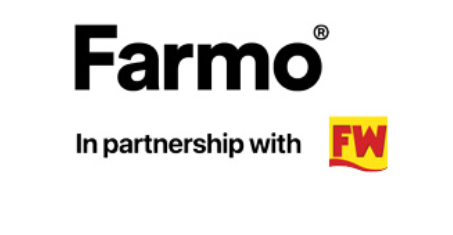Power hike for flagship Claas Trion 760 combine harvester
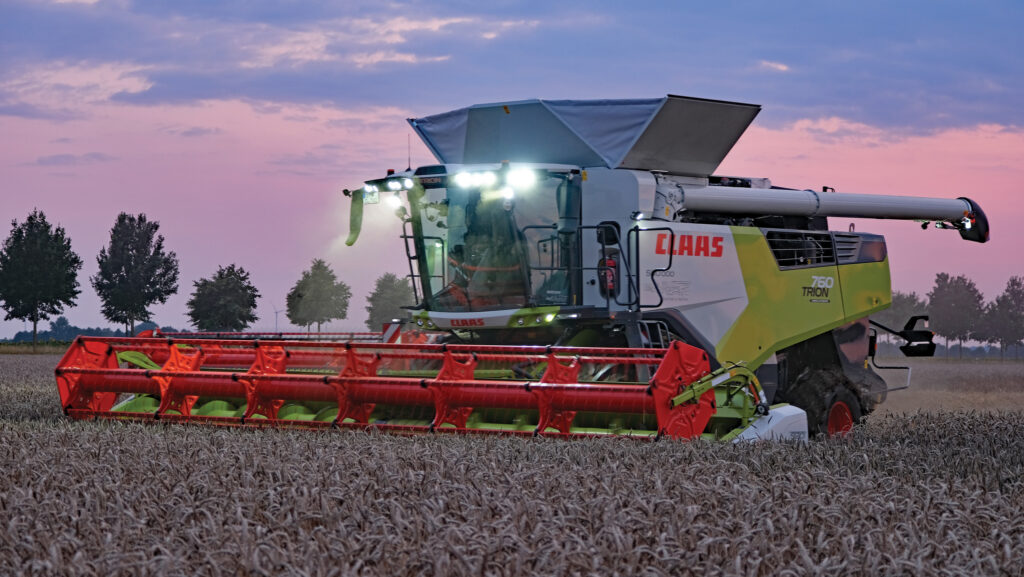 Claas Trion 760 © James Andrews
Claas Trion 760 © James Andrews There’s a new top dog in Claas’s Trion 700 combine harvester range, packing a gutsier engine, bigger grain tank and higher-spec cab than its predecessor.
Primarily aimed at customers who want to run larger headers without having to fork out for a Lexion, the 760 serves up a healthy 507hp – 72hp more than the current 750 range topper.
There’s a change in engine provider too, with the 8.9-litre six-cylinder from Cummins ditched in favour of a 12.4-litre MAN.
See also: Driver’s view: Claas Trion 750 rated after two seasons’ work
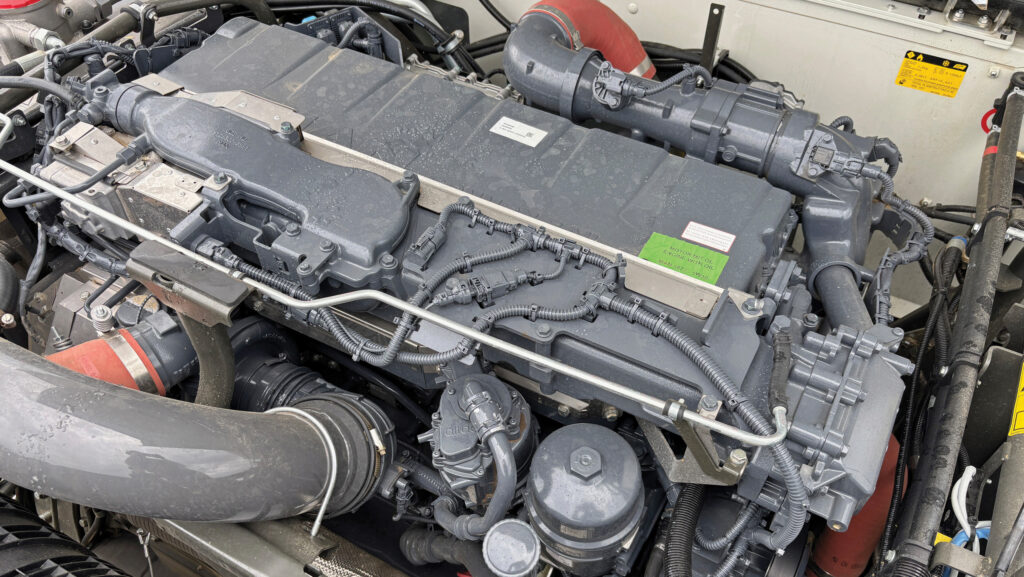
Trion MAN engine © James Andrews
Claas’s horizontal-rad “dynamic cooling” system is now tasked with regulating operating temperature, which varies fan speed according to load.
Together with automatic engine power management, the firm reckons this can deliver fuel savings of up to 10%, as well as freeing up a few extra ponies for demanding work.
Grain tank size has swelled in line with the output increase, offering up to 13,500 litres of storage space and giving more flexibility when working with the widest tables.
Though some operators already run 10.8m (35ft) headers on the largest Trions, Claas says the updated model is better suited to the task.
Most UK machines will be sold with track units up front, and though there is the option to have wheels, the 760 isn’t available with Montana hydraulic hillside levelling.
Buyers with ground steep enough to require this will need to opt for the refreshed 750 model instead.
This has received the same tranche of updates as the 760, albeit with the MAN block tuned to deliver 466hp and grain tank size topping out at 12,000 litres.
Both models are fitted with the same 1,420mm-wide hybrid crop processing system, with an APS drum, 600mm threshing drum, impeller and a pair of 445mm diameter separation rotors.
As for the smaller single-rotor hybrid Trion 700s – 720, 730 and 740 – these are still powered by an 8.9-litre Cummins block.
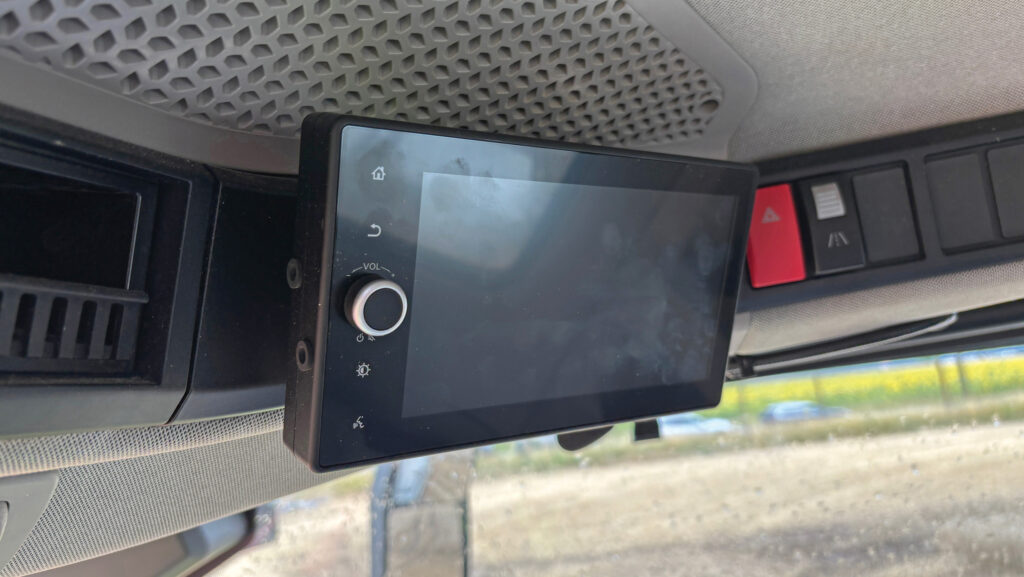
CarPlay screen in Trion cab © James Andrews
Cabs have been upgraded too, with an additional 6.75in screen running Apple CarPlay and Android Auto now on the options list.
Extra cab storage areas are an added bonus, as is an air line connection and blower gun for dusting out the interior.
The usual suite of Cemos Automatic systems in is the offing, giving operators the chance to decide how much of the setup they want to entrust to the combine.
In top-spec “professional” guise this includes camera-based monitoring to help achieve peak grain quality and sample cleanliness.
On top of this, operators can make use of the Claas Connect telematics system, which provides a raft of machine information and will even estimate how long it will take to cut each field.
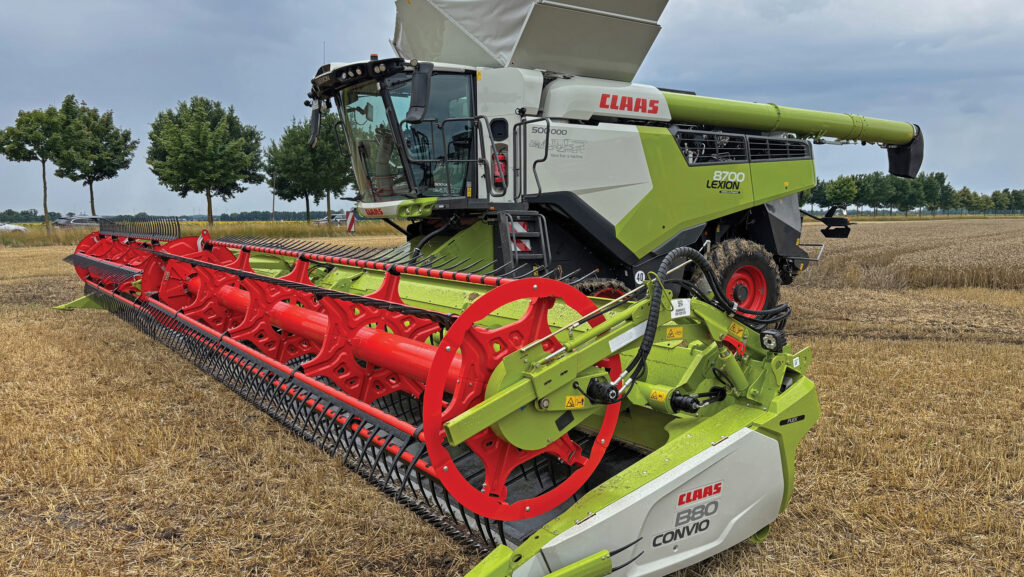
Lexion 8700 © James Andrews
Lexion 8000
The firm’s higher-spec Lexion combines have been treated to the same cabin enhancements, along with some power upgrades, the odd engine change, and tweaks to grain tank size.
At the lower end of the flagship 8000 range there’s a new 8500/8500TT that delivers 549hp from its 12.4-litre MAN engine and comes with the option of a 13,500 or 15,000-litre grain tank.
It shares the same internals as its stablemates, albeit with five rather than six rotor concaves and a slightly slower rotor speed of 1,000rpm.
Larger 15.2-litre MAN six-pots are now fitted in the 8600TT and 8700TT, with the latter getting the option of an 18,000-litre grain tank to match the 8800TT and range-topping 8900TT.
As with the previous generation, all 8000-series Lexions feature a 1,700mm wide hybrid separation system with 755mm threshing drum.
There are some engine changes in smaller Lexions too, with the narrow-body hybrid 7500/7500TT and six-walker 6800/6800TT getting a 12.4-litre MAN block tuned to 466hp.

